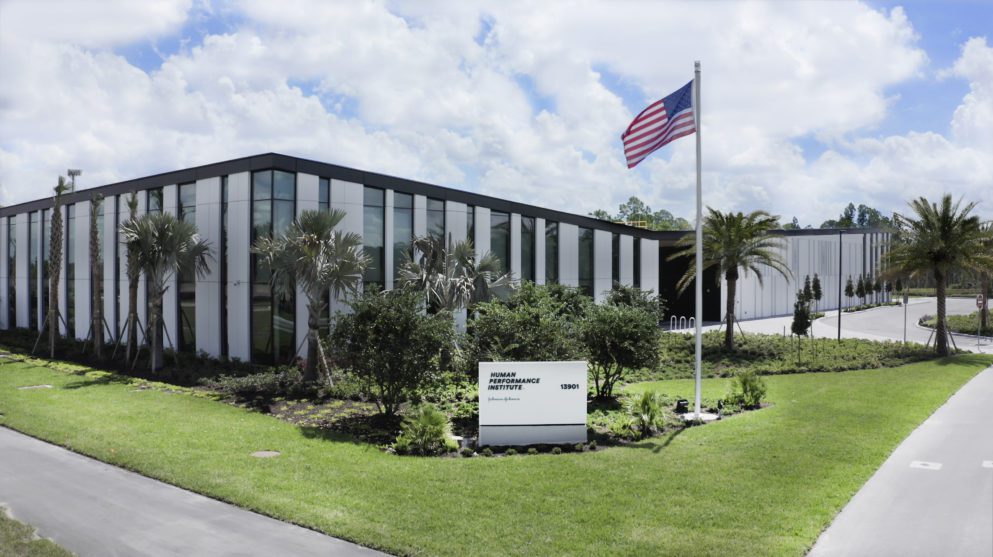## From Classroom to Cosmic Frontier: Eastern Florida’s Aerospace Tech Program Blazing a Trail to the Stars Picture this: a future where humanity walks on Mars, probes the depths of our solar system, and pushes the boundaries of space exploration further than ever before. The dream of space travel isn’t just science fiction anymore, it’s rapidly becoming reality. And at the heart of this cosmic revolution lies a hidden gem on Earth: Eastern Florida’s Aerospace Technology Program. We’re diving deep into this innovative program, where classrooms transform into launch pads and the next generation of astronauts, engineers, and pioneers are being forged. Get ready to explore the exciting world of spaceflight training and discover how Eastern Florida is shaping the future of humanity among the stars.
Preparation for the Future of Aerospace: Emerging Technologies and Trends

The aerospace industry is undergoing a significant transformation, driven by emerging technologies and trends. One of the key areas of focus is the development of reusable rockets, which has the potential to significantly reduce the cost of access to space. Companies such as SpaceX and Blue Origin are at the forefront of this effort, with reusable rockets like the Falcon 9 and New Glenn.
Another key trend in the aerospace industry is the increasing use of artificial intelligence and machine learning. These technologies are being used to improve the efficiency and safety of space operations, as well as to enable new types of space missions. For example, NASA’s Artemis program is using AI and machine learning to plan and execute the first woman-led mission to the lunar surface.
The aerospace industry is also seeing a growing focus on sustainability and environmental responsibility. Companies are developing new propulsion systems and materials that are more efficient and less polluting, and are working to reduce waste and minimize their environmental impact.
Eastern Florida’s Aerospace Technology Program is at the forefront of this transformation, providing students with the skills and knowledge they need to succeed in the rapidly evolving aerospace industry. The program offers a range of courses and degree programs in aerospace engineering and technology, as well as research opportunities and internships with industry partners.

Launchpad for Future Astronauts
From Education to Employment: The Career Path of Aerospace Professionals
Aerospace professionals can pursue a wide range of career paths, from engineering and design to operations and management. The field offers a high level of job security and opportunities for advancement, as well as a competitive salary and benefits package.
To succeed in the aerospace industry, professionals need a strong foundation in math and science, as well as skills in areas such as programming and computer-aided design. They also need to be able to work effectively in teams and communicate complex technical information to non-technical stakeholders.
Education and training are critical components of a successful career in aerospace. Professionals can pursue degrees in aerospace engineering, physics, mathematics, or computer science, and can also participate in internships, research projects, and continuing education programs to stay up-to-date with the latest technologies and trends.
- Aerospace engineers design and develop aircraft, spacecraft, and missiles, as well as their systems and components.
- Aerospace technicians install, maintain, and repair aircraft, spacecraft, and missiles, as well as their systems and components.
- Aerospace operations specialists plan and execute the launch and recovery of spacecraft and missiles.
- Aerospace managers oversee the development and operation of aerospace systems and programs.
Case Studies: Success Stories of Aerospace Professionals in Central Florida
Central Florida is home to a thriving aerospace industry, with companies such as NASA, SpaceX, and Boeing operating in the region. The area is also home to a number of successful aerospace professionals who have built careers in the field.
One such professional is Dr. Karen Flammer, a professor of aerospace engineering at the University of Central Florida. Dr. Flammer has spent her career developing and teaching courses in aerospace engineering, and has also worked as a researcher and consultant for a number of industry partners.
Another successful aerospace professional is John Insprucker, a systems engineer at SpaceX. Insprucker has worked on a number of high-profile projects, including the development of the Falcon 9 and Dragon spacecraft.
These success stories demonstrate the potential for careers in aerospace, and highlight the importance of education and training in preparing professionals for the industry.
The Future of Aerospace in Eastern Florida
Opportunities and Challenges for Businesses in the Aerospace Industry
The aerospace industry is facing a number of challenges, including increasing competition and declining government funding. However, the industry also offers a number of opportunities, including the development of new technologies and the growth of the global space market.
Companies that are able to adapt and innovate will be well-positioned to succeed in the aerospace industry. This may involve developing new products and services, or finding new ways to reduce costs and increase efficiency.
Businesses in the aerospace industry can also benefit from partnerships and collaborations with other companies and organizations. This can help to share resources and expertise, and can also provide opportunities for joint research and development projects.
Policy makers and governments can also play a critical role in supporting the aerospace industry. This may involve providing funding and resources for research and development, or implementing policies that promote innovation and entrepreneurship.
Policy and Regulatory Frameworks for Supporting Aerospace Innovation
The aerospace industry is subject to a number of regulations and policies, including those related to safety, security, and environmental impact. Companies must also comply with a range of international standards and agreements.
However, the regulatory framework for the aerospace industry is also evolving to support innovation and entrepreneurship. For example, the U.S. government has established a number of initiatives and programs aimed at encouraging the development of new technologies and products.
Private companies are also playing a critical role in shaping the regulatory framework for the aerospace industry. For example, companies such as SpaceX and Blue Origin are working with government agencies and regulatory bodies to develop new safety and security standards for commercial spaceflight.
As the aerospace industry continues to evolve and grow, it is likely that the regulatory framework will continue to change and adapt. Companies and organizations must be prepared to navigate these changes and adapt to new requirements and regulations.
Conclusion
Eastern Florida State College’s Aerospace Technology Program is not just providing wings for future astronauts; it’s forging a pathway towards a more ambitious future in space exploration. From hands-on training with cutting-edge simulators to a curriculum designed by industry experts, the program equips students with the skills and knowledge needed to navigate the complexities of space travel. By fostering a collaborative environment and emphasizing practical experience, EFSC is laying the groundwork for a new generation of pioneers who will push the boundaries of human ingenuity.
The implications of this program extend far beyond the individual dreams of aspiring astronauts. As the private sector plays an increasingly vital role in space exploration, a skilled workforce is essential for driving innovation and realizing the immense potential of commercial space ventures. EFSC’s commitment to providing this foundation is a testament to its understanding of the transformative power of aerospace technology. This program is not merely training technicians; it’s nurturing the future architects of a spacefaring civilization, one launchpad at a time.
The stars beckon, and with programs like this, the journey beyond Earth is no longer a distant dream, but a tangible reality within reach.
